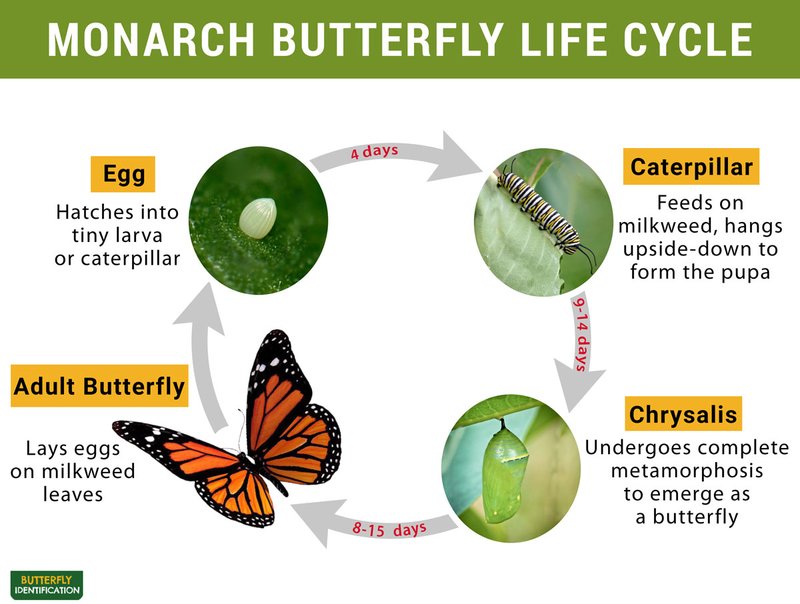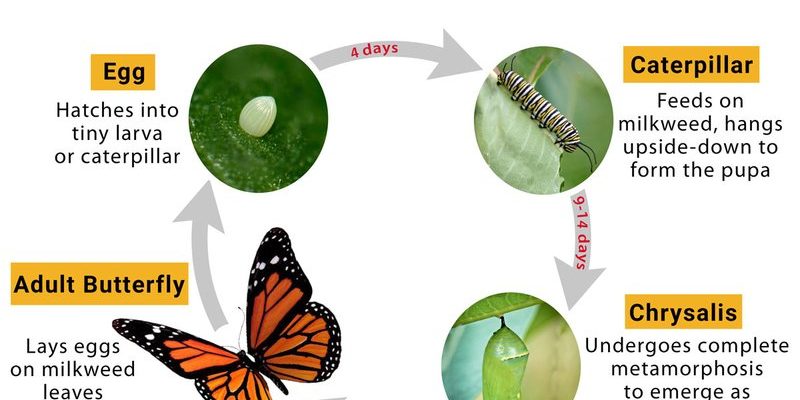
Imagine starting life as a tiny dot, clinging to a leaf. That’s exactly where a monarch butterfly begins its journey. Each stage of its development is like a chapter in a remarkable story, filled with challenges and changes. Let’s walk through this lifecycle together, exploring the amazing metamorphosis that turns a humble egg into one of nature’s most beautiful insects.
Stage 1: The Egg
The journey of a monarch butterfly begins as an egg, about the size of a pinhead. Lay your eyes on a milkweed leaf and you might spot these tiny gems. A female monarch carefully selects a milkweed plant to lay her eggs because, well, it’s the perfect food source for the future caterpillars. Honestly, it’s like choosing a restaurant that will serve you the best meal—she’s making sure her offspring have everything they need to thrive.
Each egg takes about 3-10 days to hatch, depending on environmental conditions like temperature and humidity. During this time, the magical process of development happens within the egg. You might be wondering what happens inside. Essentially, the egg is a tiny, self-contained world where the caterpillar is forming, awaiting its bright debut.
Stage 2: The Caterpillar (Larva)
Once the egg hatches, out comes a hungry little caterpillar, also known as a larva. It’s smaller than a pencil eraser but is already on a mission: to eat! Monarch caterpillars are voracious munchers, primarily dining on milkweed leaves. This diet is crucial—it not only fuels their growth but also helps them accumulate toxins from the plant, making them less appealing to predators. Talk about a smart strategy!
Caterpillars go through five growth stages, known as instars. A caterpillar sheds its skin several times as it grows larger—imagine getting a new outfit for every growth spurt! It can take about 10 days for the caterpillar to reach its full size before it’s ready for the next big step in its transformation.
Stage 3: The Chrysalis (Pupa)
After feasting and growing, the time comes for the caterpillar to undergo a remarkable transformation. This is where the little creature finds a safe spot, often under a leaf or on a tree branch, and attaches itself upside down to form a chrysalis or pupa. This stage is like a superhero’s secret lair, where all the magic happens.
Inside the chrysalis, the caterpillar’s body begins breaking down and reassembling itself into a butterfly. This process can take anywhere from 7 to 14 days. While it may seem like it’s just hanging there, a lot is going on. Key structures like wings and antennae are developing. It’s fascinating to think that during this time, the caterpillar is literally transforming into a beautiful monarch butterfly.
Stage 4: The Adult Butterfly
Finally, the day arrives! The chrysalis splits open, and out crawls a brand-new monarch butterfly. Its wings are crumpled and damp at first, looking a bit like a wrinkled piece of paper. The butterfly needs to pump blood into its wings to expand them fully. This is a crucial moment, as it’s essential for the butterfly to dry and strengthen its wings before its first flight.
This is where things get exciting. The adult butterfly is ready to spread its wings and explore the world around it. With a lifespan ranging from a few weeks to several months (depending on the time of year), monarchs are not just pretty faces; they are also skilled migrators. Many travel thousands of miles to escape the cold, showing remarkable navigation skills along the way.
The Importance of Monarch Butterflies
You might be wondering why monarch butterflies matter so much. Well, they’re not just beautiful; they play an important role in our ecosystem. Monarchs are pollinators, helping plants reproduce and contributing to the health of various ecosystems. Their migration patterns also provide scientists with critical information about climate change and environmental shifts.
Moreover, their lifecycle serves as a reminder of the beauty of transformation. Just like the monarch undergoes a magnificent change, we all go through our own journeys of growth and discovery. Monarchs can inspire us to embrace change, learn, and adapt.
Protecting Monarch Butterflies
Unfortunately, monarch butterflies face threats that could impact their survival. Habitat loss, pesticide use, and climate change all take a toll on their populations. It’s essential to raise awareness about these issues and what we can do to help. For instance, planting milkweed in your garden can provide a critical food source for these incredible creatures.
Additionally, engaging in community efforts to protect natural habitats can make a significant difference. Simple actions, like reducing pesticide use and supporting local conservation groups, can help ensure that future generations of butterflies can thrive and continue their extraordinary lifecycle.
The lifecycle of a monarch butterfly is a fascinating journey of growth, transformation, and resilience. From a tiny egg to a vibrant adult, each stage is filled with challenges and beauty. Understanding this journey not only deepens our appreciation for these delicate creatures but also highlights the importance of protecting their habitats. So, the next time you see a monarch butterfly fluttering by, remember the incredible story behind its vibrant wings. Let’s do our part to ensure that this beautiful lifecycle continues for generations to come!

